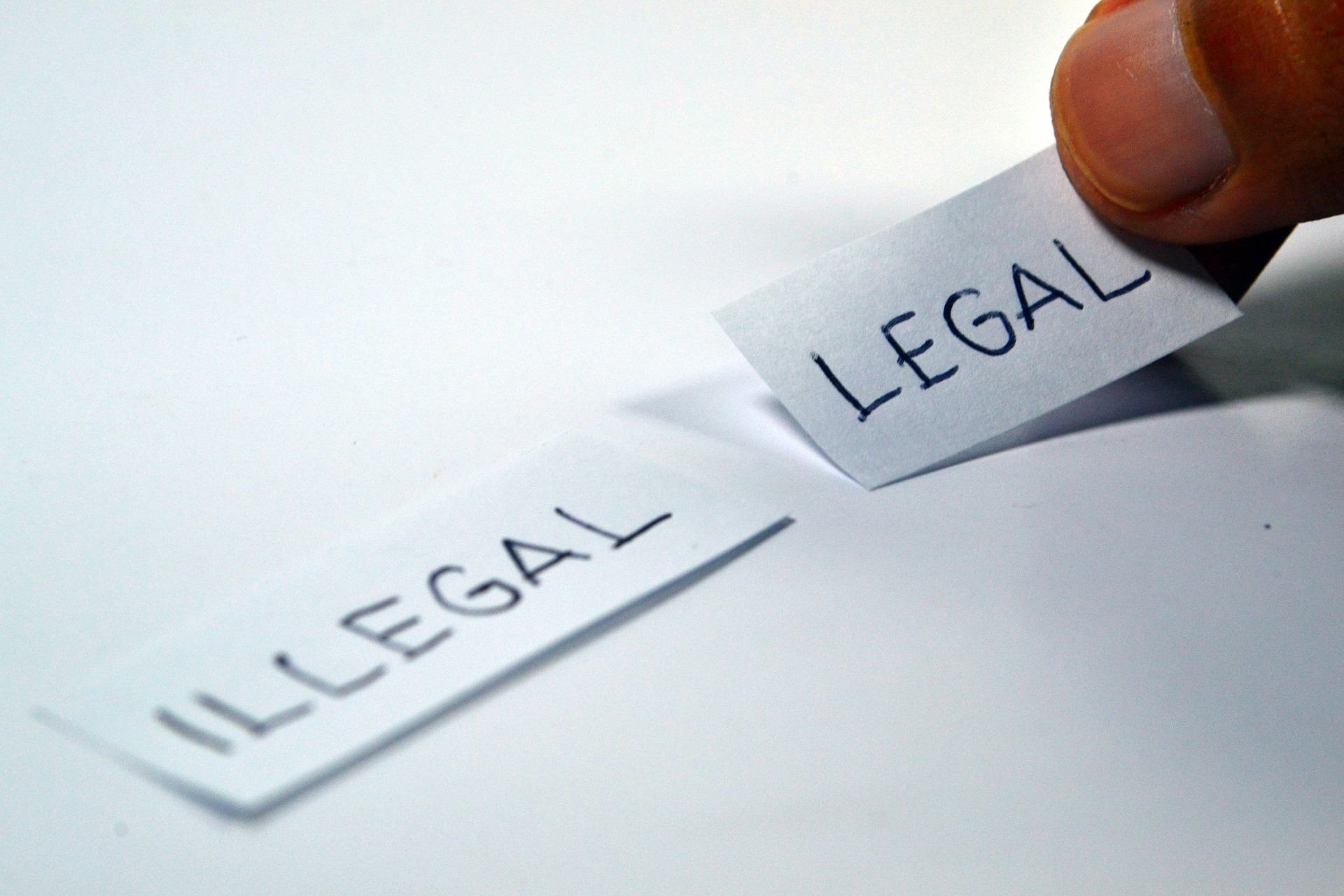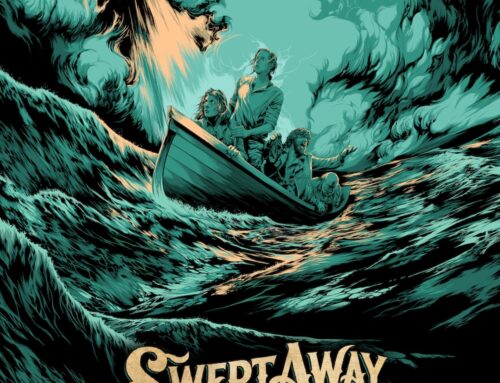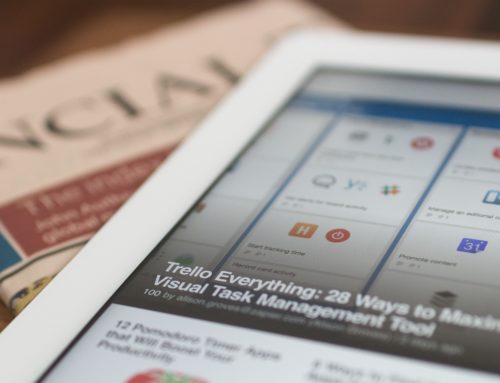 Guest Post by Kerry O’Shea Gorgone
Guest Post by Kerry O’Shea Gorgone
Contrary to popular belief, lawyers do not enjoy making your job harder by nixing your creative campaign ideas. We’re just trying to protect you from risks you might not even realize exist—the kinds of risks that can cost a client or your own company a lot of money.
There are legal rules marketers and PR professionals aren’t always aware of, and there can be serious legal consequences if these rules are violated.
Let’s explore a few common legal problems (and their solutions) so that you and your clients can stay on the right side of the law!
Problem #1: Using other people’s copyrighted content is incredibly risky!
For example, copywriters at Webcopyplus posted a beach photo they found on Google on a client’s blog. A few months later, the client received a cease and desist letter claiming copyright infringement. The person who owned the photo was demanding $4,000 to settle the claim, even though the firm took the picture down immediately. Looking at a seriously expensive copyright lawsuit, they paid. One picture used to accompany one blog post cost them $4,000.
Now think about this: how many blog posts do YOU write for clients every day?
Understand that lawyers don’t say no to using other people’s content because we’re not cool. We know memes and gifs are cool. But they’re also copyright infringement. You can decide whether to share this type of content on your personal pages, but don’t take the risk when posting for a brand or client. It’s just not worth it!
You could look for third-party content that’s free for commercial use. Some content creators do post their pictures, videos and other content pursuant to a Creative Commons license. The trouble is, you can’t be sure that the person who posted content actually IS the owner. Third parties upload stolen content all the time. Just check out YouTube for proof! So you can’t know for certain that you’re in the clear, even if you find a great picture posted under a Creative Commons license.
So here’s the solution to problem #1: Create your own images, videos, and other materials for your marketing.
It’s not as hard as you might think, with the advent of smartphones and tablets, capturing great pictures and video is easier than ever. You’ll know you have rights in the material you’re using, and people will feel closer to your brand because they’re seeing the authentic you! Do make sure you protect your own copyright in these assets.
So using your own original writing, pictures, and videos can minimize the risk of copyright infringement, but what about other popular tactics, like giveaways? Those are risky, too!
Which Brings Us to Problem #2: Your giveaway might actually be an illegal lottery!
Here’s an example: supermarket chain A&P had to pay $102,000 in fines for failing to advertise the “no purchase necessary” method of entry for their giveaway as prominently as they’d advertised how people could enter by buying merchandise. You know that giveaway ended up costing a lot more than they made on frozen food sales!
Running a sweepstakes or giveaway can drive engagement for your brand, but you need to avoid lotteries, or “Games of Chance.” These are “pay to play” arrangements: buy a ticket, you’re eligible to win. So long as your giveaway is “no purchase necessary,” you’re generally in the clear, but some states are very strict about what “No Purchase Necessary” means: even asking people to complete a survey might constitute a “purchase” that would make your giveaway an illegal lottery.
And there are risks arising from international law, too. In Canada, for example, it’s illegal to award prizes based on luck alone: some element of skill must be involved, like answering a trivia question or a math problem. Do your giveaways specify that they’re open only to U.S. residents and say void where prohibited?
You might be thinking, “Forget this mess, I just won’t do giveaways or contests anymore.” But don’t give up! You can lower your risk by running contests instead of giveaways: you just need to know the difference between the two! So here it is:
In a contest, judges select winners based on an established set of criteria. The most creative photo. The funniest comment. The cutest home video.
In a game of chance, winners are selected a random. These kinds of giveaways involve no element of skill. Tools like Rafflecopter or Random.org can randomly select a winner for you, you could draw names from a hat, you get it.
If people need to give you something of value in exchange for a chance to win, that could be considered a lottery (pay to play). The ONLY legal lotteries are state run.
Promotional giveaways must be “no purchase necessary,” or they’re lotteries!
But here’s the hitch: “purchase” doesn’t have to mean money. “Purchase” could mean doing anything beyond giving basic contact information. This means that requiring people to fill out a survey, leave a blog comment, Like your Facebook page or visit a brick and mortar location could count as “pay to play,” which turns your giveaway into an illegal lottery!
You need to check the law in your jurisdiction before running a giveaway. If this seems silly, remember that a Florida court once held that an online giveaway was an illegal lottery because it required entrants to have Internet access. Internet access.
Not that people would have to purchase Internet to be eligible for the giveaway, mind you, but just to have Internet access so they could get online to enter! That decision was reversed later, but I’d still err on the side of caution.
So unintentionally running an illegal lottery is a problem.
Here’s the solution: Know the difference between contests of skill and games of chance and run contests instead.
Run photo contests, essay contests, caption contests, whatever. So long as you’re awarding the prize based on skill.
And we’re using the term “skill” pretty loosely here. “Funniest caption” is fine, as long as you clearly state the rules for entry and explain who will judge.
Problem #3: Live streaming without planning can expose you to risk!
Now you know how to avoid illegal giveaways and you know that creating your own content is the safest bet in terms of copyright risk. In your effort to create original content, you might be thinking about live streaming.
We all want to try the latest thing and for PR professionals the first mover advantage is absolutely real. But there are risks. We can’t just pull out our phones and start live streaming on behalf of the brands we represent.
Here’s the solution to Problem #3: Plan your live stream as carefully as you would plan a traditional video shoot.
Stream from an area you can control. Storyboard the shot. What will be visible in frame? (Remember, people could view your live stream on a huge monitor, as opposed to a mobile device.) Is there confidential information visible anywhere? Remove it!
Anytime you’re showing people’s faces, you really want to get a signed release. If there are too many people in your stream for signed releases to work, post crowd releases—flyers that let people know shooting is happening in the area and that entering that space means that they consent to their image and likeness being used.
Ideally, you should have releases from everyone visible, but if that’s not practical, at least get signed releases from people you interview or feature heavily in your stream. Don’t use someone’s likeness in commercial content without permission. (Especially a celebrity.)
Live streaming is definitely one “shiny new thing” people are interested in, but influencer marketing is also on the rise. And no wonder—it’s incredibly effective.
But the Federal Trade Commission (FTC) requires strict adherence to disclosure requirements for brands and influencers engaged in this kind of sponsored relationship.
Problem #4: Influencers don’t always disclose!
In one recent case, clothing retailer Lord & Taylor paid fashion influencers to share a photo of themselves wearing a dress from the company’s “Designer Lab” collection on Instagram. Each influencer received between $1,000 and $4,000 to share the photo. Only a few of them mentioned that fact while posting the pics, though.
The FTC issued a warning letter in that case, and we can expect a big fine the next time a brand does this, but you don’t have to be a compliance statistic. You can substantially reduce the risks by knowing (and doing) a few simple things.
Solution to Problem #4: Require Influencers to Disclose, and help them to do so.
We all know that some marketing channels don’t leave you much room for disclosures or explanations of sponsorship deals, but the FTC has made it clear that they don’t care. In their view, if you can’t disclose a material connection between you and the influencer in a 140-character tweet, then don’t use Twitter for promotion.
Every post containing or linking to sponsored material needs to inform readers of the connection between the influencer and the brand.
Remember the 4 Ps:
- Placement (Put disclosures close to the claim they qualify.)
- Proximity (Don’t make users scroll or zoom to see disclosure.)
- Prominence (Make it stand out on the page.)
- Presentation Order (Make it “unavoidable” that consumers see disclosure before they can proceed.)
The key to disclosure is making it clear that content has been purchased, or at least incentivized in some way. On Facebook, a post can be labeled “Sponsored,” indicating that the person or business making the post has paid to promote it on their timeline. Clicking through on the word “sponsored” will bring you to the Facebook page explaining how sponsored content works on that social network.
Hashtags aren’t enough. They’re not even required! Putting what Baby Boomers might call a “pound sign” in front of a word doesn’t make things any clearer to the consumer. When’s the last time you searched Twitter for #SPON?
It’s not about whether to use a hashtag or what hashtag to use: it’s about making it clear to an average consumer that there’s a relationship they might not otherwise be aware of.
Make disclosures easy to read by using simple language, like “Thanks to Ford of South Florida for lending me this 2019 Mustang for a week-long test-drive! I love how it handles.” No hashtags, no fancy legal terminology, just a clear explanation of exactly what the influencer received from the brand.
For more information, check out this post I wrote for Mark Schaefer’s blog on avoiding influencer marketing disaster and this one that covers tips for influencer marketing.
For all four problems we’ve discussed, an ounce of prevention is worth a pound of cure, legally speaking. And all four problems really boil down to this one problem: What you don’t know can hurt you.
The Solution: Actively look for potential problems ahead of time.
To avoid copyright concerns, create your own content.
To avoid illegal giveaways, run contests of skill instead.
To avoid legal pitfalls while live streaming, plan ahead.
To avoid FTC complaints, insist that influencers disclose (and help them to do so).
I hope you can see that your legal team is on your side. The best PR professionals take risks, but not unnecessary risks. Without realizing it, some companies and agencies risk being sued or fined thousands of dollars because their campaigns break the law.
But now you know how to minimize legal risks by using your own content, running contests instead of giveaways, planning before you stream, and being responsible with your influencer marketing.
So next time you run an idea by legal, your lawyers can say YES, because you’ll have planned ahead. Good luck!
Image: Ramdlon via Pixabay, Creative Commons License CC0
 Kerry O’Shea Gorgone, JD, MBA, is a lawyer, podcaster, speaker and writer. By day, she oversees the sale and distribution of MarketingProfs’ premium training products to individual marketers and corporations in her role as Director of Product Strategy, Training. By night (and on weekends) Kerry writes for some of the most authoritative sites in the marketing and PR industry, including Mark Schaefer’s {grow} blog, Social Media Explorer, Entrepreneur, Spin Sucks, and MackCollier.com, and also contributes to Huffington Post. Kerry hosts the MarketingProfs weekly interview series, Marketing Smarts, named by Fast Company as one of the best business podcasts on the internet and one of “19 Podcasts Worth More Than an MBA” by Inc. The show features industry stars and authors like Chris Brogan, Ann Handley and Gary Vaynerchuk, as well as business personalities like Jon Taffer of ‘Bar Rescue’ and actress Jane Seymour. She’s also interviewed c-suite executives from organizations like IBM, National Geographic, Dell and the Baltimore Ravens. Learn more about her at KerryGorgone.com.
Kerry O’Shea Gorgone, JD, MBA, is a lawyer, podcaster, speaker and writer. By day, she oversees the sale and distribution of MarketingProfs’ premium training products to individual marketers and corporations in her role as Director of Product Strategy, Training. By night (and on weekends) Kerry writes for some of the most authoritative sites in the marketing and PR industry, including Mark Schaefer’s {grow} blog, Social Media Explorer, Entrepreneur, Spin Sucks, and MackCollier.com, and also contributes to Huffington Post. Kerry hosts the MarketingProfs weekly interview series, Marketing Smarts, named by Fast Company as one of the best business podcasts on the internet and one of “19 Podcasts Worth More Than an MBA” by Inc. The show features industry stars and authors like Chris Brogan, Ann Handley and Gary Vaynerchuk, as well as business personalities like Jon Taffer of ‘Bar Rescue’ and actress Jane Seymour. She’s also interviewed c-suite executives from organizations like IBM, National Geographic, Dell and the Baltimore Ravens. Learn more about her at KerryGorgone.com.



![[EVENT]: PR Hacks for Small Biz (online)](https://shonaliburke.com/wp-content/uploads/2021/06/FB-Ad-1200x800-01-01-01-Copy-500x383.jpeg)





Leave A Comment